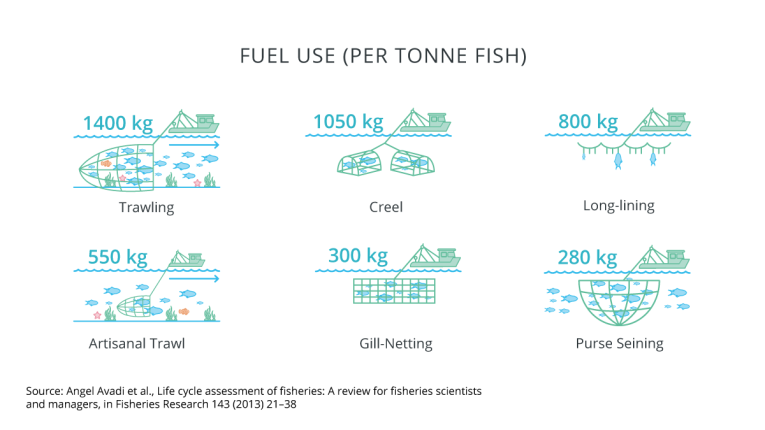IFFO facts and figures based on the GFLI’s dataset (version 2)

Source: GFLI v2
Carbon footprint of krill fishing consists of:
- 3,800 kg carbon equivalent / tonne of Antarctic Krill meal
- 4,436 kg carbon equivalent / tonne of Antarctic krill oil
- The total annual catch of Antarctic krill from this region ranged from 160,000–450,000 tons during 2010–2020. This is minor compared to other fisheries (see below about anchoveta).
Carbon footprint of Peru’s anchoveta fishing consists of:
- 630 kg carbon equivalent / tonne of Peruvian anchoveta meal
- 730 kg carbon equivalent / tonne of Peruvian anchoveta oil
- On average, 4.5 million tonnes of anchoveta are caught in a year.
Carbon footprint of Alaska pollock fishmeal consists of:
- 163 kg carbon equivalent / tonne of Alaska pollock meal
About these calculations?
These calculations are based on a life cycle assessment (LCA) approach and rely on a value chain perspective: they measure the sustainability of the whole value chain, not just a particular use point, by looking at the production/capture, processing, distribution, consumption, and waste disposal. At each point of the value chain there are impacts and LCA attempts to collate those. In the case of krill fishing vs anchoveta fishing, the difference comes from the distance between the port and the fisheries (typically 5 to 10 miles from the coast in Peru vs 2,000+ miles from the coast in the case of the krill fishery).
Economic allocation principles: mass * economic value
When looking at a typical marine ingredient production process, there are occurrences where the raw material is diverted into more than one product: fish for direct human consumption and trimmings for instance. Therefore, co-product allocation is critical for data collection and interpretation of any life cycle assessment study.
In the case of krill fishing, the main reason for it is the nutraceutical demand for omega-3s (most of the oil is not used in the aquafeed sector). As the fishmeal and fish oil sector operates on a zero-waste approach, trimmings and by-products are processed.
In the case of the Alaska pollock, it is caught for the meat (the fillets account for ~95% of the fish’s value) but the rest of the fish is processed. Therefore ~95% of the fuel’s carbon footprint is allocated to the meat.
The fishing gear has a huge impact on carbon footprint as it influences fuel use. Pelagic species are mostly caught using purse seine fishing gears.

Sources: Fishery Report 2020: Euphausia superba in Area 48 (ccamlr.org)
https://www.ccamlr.org/en/fisheries/krill-fisheries-and-sustainability








